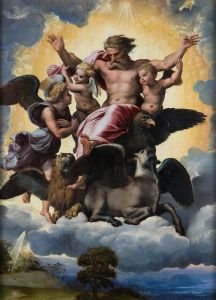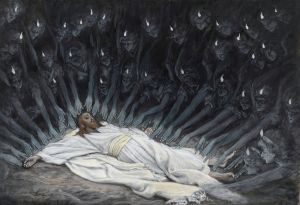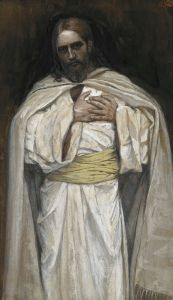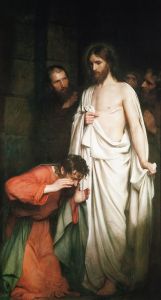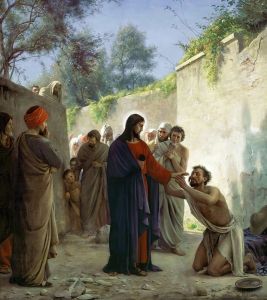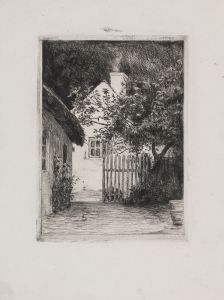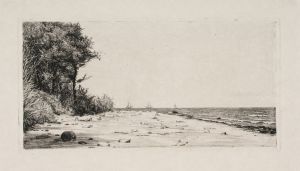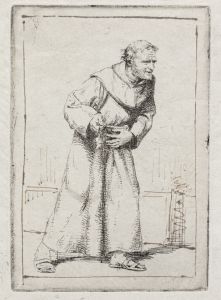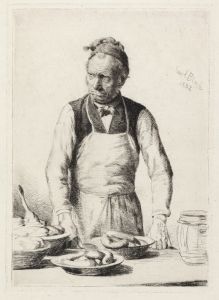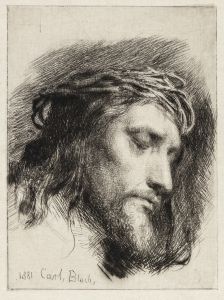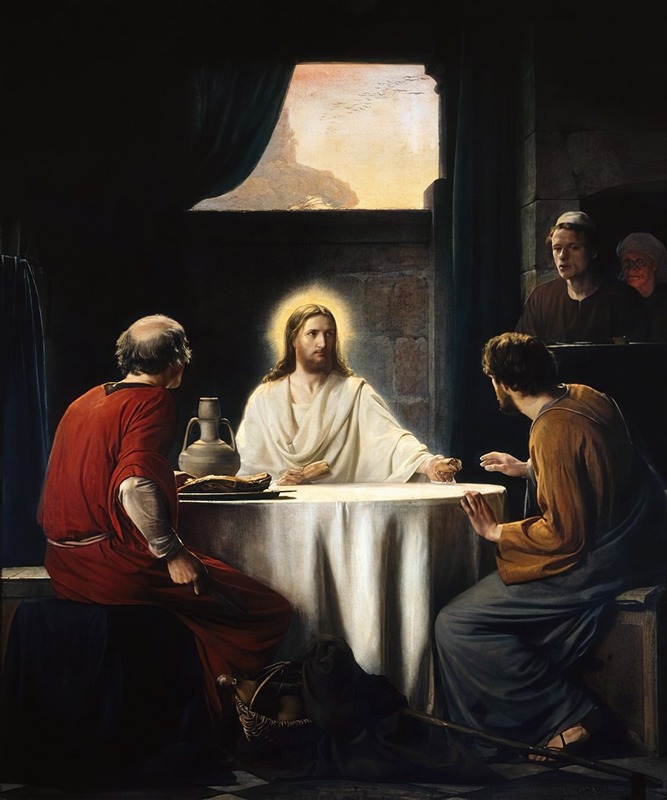
Supper at Emaus
A hand-painted replica of Carl Bloch’s masterpiece Supper at Emaus, meticulously crafted by professional artists to capture the true essence of the original. Each piece is created with museum-quality canvas and rare mineral pigments, carefully painted by experienced artists with delicate brushstrokes and rich, layered colors to perfectly recreate the texture of the original artwork. Unlike machine-printed reproductions, this hand-painted version brings the painting to life, infused with the artist’s emotions and skill in every stroke. Whether for personal collection or home decoration, it instantly elevates the artistic atmosphere of any space.
Carl Bloch's painting "Supper at Emmaus" is a significant work of art that depicts a scene from the New Testament of the Bible. Carl Heinrich Bloch, a Danish painter, created this piece in the 19th century. He was born on May 23, 1834, and died on February 22, 1890. Bloch is renowned for his religious paintings, and "Supper at Emmaus" is one of his notable works.
The painting illustrates the moment described in the Gospel of Luke, chapter 24, verses 30-31, where the resurrected Jesus reveals himself to two of his disciples in the town of Emmaus. According to the biblical account, the disciples did not recognize Jesus until he broke bread with them. This moment of revelation is the focal point of Bloch's painting.
In "Supper at Emmaus," Bloch captures the dramatic and emotional moment when the disciples realize that they are in the presence of the risen Christ. The composition of the painting is carefully arranged to highlight the expressions and gestures of the figures. Jesus is depicted at the center of the table, breaking bread, with the two disciples seated on either side of him. The expressions on the disciples' faces convey a mix of astonishment, reverence, and recognition.
Bloch's use of light and shadow in the painting enhances the spiritual and dramatic atmosphere of the scene. The light appears to emanate from Jesus, symbolizing his divine nature and the revelation of his identity to the disciples. The background of the painting is relatively dark, which further emphasizes the central figures and the miraculous moment being depicted.
Carl Bloch's "Supper at Emmaus" is part of a larger series of paintings that he created for the King's Chapel at Frederiksborg Castle in Denmark. This series includes 23 paintings that depict various scenes from the life of Christ. Bloch was commissioned to create these works by King Christian IX of Denmark, and they were completed between 1865 and 1879. The series has been highly regarded for its artistic quality and its ability to convey the spiritual and emotional depth of the biblical narratives.
Bloch's work has had a lasting impact on religious art, and his paintings continue to be admired for their technical skill and emotional resonance. "Supper at Emmaus" is a prime example of his ability to bring biblical stories to life through his art. The painting is housed in the Frederiksborg Castle, which is now the Museum of National History in Denmark.
In summary, Carl Bloch's "Supper at Emmaus" is a masterful depiction of a key moment in the New Testament, characterized by its dramatic use of light and shadow, expressive figures, and careful composition. It remains an important work within the context of 19th-century religious art and continues to be appreciated for its artistic and spiritual significance.





